The 1878 Morgan Silver Dollar value ranges from $150 to over $34,000 depending on condition and mint mark. The “CC” (Carson City) variant is highly sought-after by collectors. Low-grade circulated coins typically worth $150-$300, while uncirculated examples start around $460. High-grade specimens (MS-63 to MS-65) command several thousand dollars, with pristine MS-67 coins exceeding $34,000. Proof Like and Deep Proof Like variants range from $700 to $30,000+. Key value factors include professional grading, rarity of uncirculated CC specimens, and special attributes like original GSA hoard packaging. The “S” (San Francisco) and Philadelphia (no mint mark) versions also exist with varying values based on condition.
The 1878 Morgan Silver Dollar marks the beginning of one of America’s most beloved coin series, and collectors are willing to pay premium prices for well-preserved examples. Whether you’ve inherited a coin from Carson City or found a Philadelphia-minted specimen in an old collection, understanding the precise value of your 1878 Morgan Dollar requires knowing the mint mark, grade, and potential errors. This guide breaks down current market prices across all three major varieties, helping you determine what your coin is actually worth today.
Understanding the 1878 Morgan Dollar Production
The first year of Morgan Dollar production saw three facilities striking coins: Philadelphia (no mint mark), San Francisco (S), and Carson City (CC). The Philadelphia Mint produced 10,508,000 coins, making it the most common variety. San Francisco struck 9,774,000 pieces, while Carson City—the newest and smallest mint—produced just 2,212,000 coins. This lower mintage from Carson City, combined with higher attrition rates over 145 years, makes the 1878-CC significantly scarcer in all conditions.
Each mint faced different quality control standards. Carson City’s first-year Morgan Dollars often show weaker strikes, particularly on the eagle’s breast feathers on the reverse. This technical challenge means finding sharply struck Carson City examples with full detail commands substantial premiums. Philadelphia coins generally exhibit stronger strikes, though die polish lines appear on many early strikes. San Francisco produced consistently well-struck coins with good luster, falling between the other two mints in overall quality.
1878 Morgan Dollar Value by Mint Mark
Philadelphia (No Mint Mark) Values:
| Grade | Current Value | Market Notes |
|---|---|---|
| Good-4 | $32-$38 | Heavy wear, date readable |
| Fine-12 | $40-$48 | Moderate detail visible |
| AU-50 | $58-$68 | Light wear on high points |
| MS-60 | $85-$95 | Uncirculated with marks |
| MS-63 | $110-$140 | Choice with good luster |
| MS-65 | $385-$475 | Gem quality, strong eye appeal |
| MS-67 | $3,800-$5,200 | Superb specimen, rare |
The Philadelphia 1878 Morgan Dollar serves as the baseline for the series. According to PCGS CoinFacts data from 2024, approximately 350,000 examples have been certified across all grades, with the population concentrated heavily in MS-63 to MS-64 grades. Heritage Auctions reported an MS-67+ example selling for $9,000 in January 2024, demonstrating strong demand at the top end.
San Francisco (S Mint Mark) Values:
| Grade | Current Value | Market Notes |
|---|---|---|
| Good-4 | $35-$42 | Circulated extensively |
| Fine-12 | $44-$52 | Clear mint mark |
| AU-50 | $62-$75 | Minimal circulation |
| MS-60 | $95-$115 | Uncirculated entry level |
| MS-63 | $145-$185 | Better luster than Philadelphia |
| MS-65 | $625-$825 | Premium gem quality |
| MS-67 | $8,500-$12,000 | Condition rarity |
The 1878-S carries a slight premium over Philadelphia issues throughout the grading scale. Stack’s Bowers sold an MS-66+ example for $4,080 in March 2024, while an MS-67 specimen reached $11,400 at the same auction. The San Francisco coins typically display superior luster compared to their Philadelphia counterparts, explaining the price differential in mint state grades.
Carson City (CC Mint Mark) Values:
| Grade | Current Value | Market Notes |
|---|---|---|
| Good-4 | $155-$185 | Strong collector demand |
| Fine-12 | $210-$245 | Clear CC visible |
| AU-50 | $385-$465 | Pre-mint state premium |
| MS-60 | $625-$750 | Entry uncirculated |
| MS-63 | $1,450-$1,850 | Choice examples scarce |
| MS-65 | $6,200-$8,500 | Gem rarity |
| MS-67 | $34,000-$48,000 | Museum quality |
The 1878-CC commands significant premiums at every grade level. NGC Price Guide lists MS-64 examples at $3,200, while MS-65 specimens jump to $7,500. A DMPL (Deep Mirror Proof-Like) MS-65 sold for $16,800 through Heritage Auctions in September 2023. The CC mint mark alone adds substantial value—even heavily worn Good-4 examples trade for five times the value of comparable Philadelphia coins.
Proof-Like and Deep Mirror Proof-Like Varieties
Certain 1878 Morgan Dollars exhibit reflective fields resembling proof coins, despite being business strikes. These Proof-Like (PL) and Deep Mirror Proof-Like (DMPL) designations significantly impact value. A PL designation requires reflectivity of at least four inches when measured with proper lighting, while DMPL surfaces must show six inches of reflectivity with strong contrast between fields and devices.
For 1878-CC coins, DMPL examples are particularly valuable. An MS-64 DMPL specimen sold for $13,200 in February 2024, compared to $2,800 for a standard MS-64 from the same auction. The price multiplier for DMPL status ranges from 3x to 5x depending on grade. PCGS has certified only 178 1878-CC coins as DMPL across all grades as of December 2024, representing roughly 0.3% of all certified examples.
Philadelphia and San Francisco DMPL specimens also command premiums, though less dramatic. An 1878 Philadelphia MS-65 DMPL trades for $1,800-$2,400 versus $385-$475 for standard MS-65 coins. The 1878-S DMPL population is smallest of the three mints, with fewer than 90 examples certified by PCGS, making high-grade pieces genuinely scarce.
Notable Errors and Varieties
8 Tailfeathers Variety (8TF): Early 1878 production featured eagles with eight tail feathers instead of the standard seven. Both Philadelphia and San Francisco struck 8TF varieties before the design change. The 1878 Philadelphia 8TF in MS-65 sells for $750-$950, representing an 80% premium over standard 7TF examples. An MS-66 8TF example reached $3,360 at Heritage Auctions in November 2023.
7 Over 8 Tailfeathers (7/8TF): This transitional variety shows remnants of the eighth tailfeather beneath the revised seven-feather design. Found on Philadelphia and San Francisco coins, the 7/8TF variety adds 25-40% to standard values. MS-64 examples trade for $425-$525 compared to $185-$230 for regular strikes. Strong doubling on the affected feather must be visible for full premium.
Tripled Die Obverse: Several 1878 Philadelphia dollars show dramatic tripling on LIBERTY and the date. Designated as VAM-14.11 in the comprehensive Van Allen-Mallis variety catalog, strong MS-63 examples sell for $850-$1,200. Lesser doubling varieties exist but command smaller premiums of $50-$150 depending on prominence.
Doubled Die Reverse: The 1878-S VAM-55 shows clear doubling on E PLURIBUS UNUM and the eagle’s tail feathers. MS-64 specimens of this variety reached $1,680 at a February 2024 auction, approximately triple the standard 1878-S price at that grade. Authentication through variety specialists is recommended before paying premiums.
Die Cracks and Cuds: Major die breaks on any 1878 Morgan can add collector interest. A 1878-CC with a substantial cud (raised blob from a die break) covering portions of the date or motto might add $200-$500 to value in mid-grades. Dramatic examples in high mint state grades can double standard values.
Off-Center Strikes: Genuine off-center Morgan Dollars are scarce, as quality control typically caught misaligned strikes. A 1878 Philadelphia example struck 15% off-center in AU-55 condition sold for $2,880 in May 2023. The date and mint mark must remain fully visible for maximum value—coins missing these elements trade at steep discounts.
GSA Hoard Impact on Carson City Values
The General Services Administration dispersed approximately 84,000 Carson City Morgan Dollars between 1972-1980, including substantial quantities of 1878-CC pieces. These coins arrived in special black plastic holders with accompanying paperwork, creating a distinct subcategory in the market. GSA-holdered 1878-CC dollars in original packaging carry premiums of $150-$300 over non-GSA examples at equivalent grades.
Typical GSA 1878-CC coins grade between MS-60 and MS-64. An MS-63 in original GSA holder trades for $1,850-$2,100, while the same grade without GSA provenance brings $1,450-$1,650. Collectors value the historical connection and original government packaging. However, the GSA designation doesn’t guarantee superior quality—many GSA coins show bagmarks and weaker strikes typical of Carson City production.
Breaking coins from GSA holders for third-party grading has become common practice. If the coin grades MS-65 or higher, the value typically exceeds the GSA premium. An MS-65 in a PCGS or NGC holder sells for $6,200-$8,500, far surpassing the $2,200-$2,600 range for GSA MS-63 examples. Coins grading MS-62 or below usually stay in GSA holders to maximize value.
Authentication and Grading Recommendations
Submitting 1878 Morgan Dollars to PCGS or NGC is economically justified for most mint state examples and all Carson City coins regardless of condition. Grading fees start at $25 for economy service with 45-day turnaround. Express service costs $75-$100 but returns coins within 10 business days. For 1878-CC dollars expected to grade MS-64 or higher, the authentication alone provides value protection worth the fee.
Counterfeit 1878-CC dollars present significant risks. Chinese-made fakes have flooded online marketplaces since 2018, with quality improving steadily. These counterfeits typically weigh 26.2-26.4 grams versus the correct 26.73 grams, show poor edge reeding detail, and exhibit mushy design elements under magnification. Professional grading eliminates this risk entirely—both PCGS and NGC guarantee authenticity of slabbed coins.
VAM variety attribution adds another layer of certification. PCGS and NGC both offer VAM designation services for additional fees of $15-$25. Major varieties like the 8TF, 7/8TF, and significant doubled dies warrant this expense. A properly attributed VAM variety on the certification label enhances marketability and can add hundreds to thousands of dollars depending on the specific variety and grade.
Current Market Conditions and Selling Strategies
The Morgan Dollar market strengthened significantly through 2023-2024, with 1878-CC coins leading appreciation. Heritage Auctions reported 18% year-over-year price increases for MS-64 and MS-65 Carson City examples in their December 2024 market analysis. Philadelphia and San Francisco issues showed more modest gains of 4-7% across most grades, with premium examples (MS-66+, DMPL) outperforming common grades.
Selling through major auction houses maximizes returns for high-value specimens. Heritage, Stack’s Bowers, and Legend Auctions attract serious collectors willing to pay full market prices for quality material. Consignment fees typically range from 10-20% depending on lot value, but realized prices often exceed conservative estimates by 15-30% for desirable coins. Expect 60-90 days from consignment to payment.
Online marketplaces like eBay work well for common-date certified coins in standard grades. Recent sold listings show 1878 Philadelphia MS-63 examples closing between $115-$145, aligning closely with wholesale values. PayPal’s 13.7% total fee structure (including seller fees) reduces net proceeds, but immediate exposure to thousands of active buyers provides liquidity that dealer networks cannot match.
Local coin shops offer immediate payment but typically pay 60-75% of retail value. For common Philadelphia examples in circulated grades, this represents acceptable pricing given instant liquidity. However, scarce varieties, high-grade coins, and all Carson City pieces deserve competitive bids from multiple dealers or auction presentation for maximum return.
Building a Complete 1878 Morgan Set
Assembling a matched set of all three 1878 mint marks in equivalent grades creates collection synergy worth more than individual coins. A three-coin set in MS-64 with matching toning and similar eye appeal trades for premiums of 10-15% over the sum of individual pieces. Collectors seeking this presentation should budget approximately $6,800-$7,500 for quality MS-64 examples across Philadelphia, San Francisco, and Carson City.
Adding both 8TF and 7TF varieties expands the challenge. A comprehensive 1878 Morgan set including Philadelphia 8TF, Philadelphia 7TF, Philadelphia 7/8TF, San Francisco 8TF, San Francisco 7TF, and Carson City 7TF in MS-63 grade requires $8,500-$10,200 based on current market pricing. This creates a meaningful type set documenting the design transition and three different mint facilities.
Advanced collectors pursue VAM varieties, with 150+ identified combinations for 1878 across the three mints. A “Top 100 VAM” set focuses on the most significant varieties, requiring years to complete and investment exceeding $50,000 for high-grade examples. Most collectors selectively add major varieties like doubled dies and 8TF coins to basic three-mint sets, achieving balance between comprehensiveness and budget constraints.
Investment Potential and Market Outlook
Historical data shows 1878-CC Morgan Dollars appreciating at 6.8% annually over the past 20 years, outpacing inflation by a comfortable margin. MS-65 examples that traded for $2,200-$2,800 in 2004 now bring $6,200-$8,500, representing 185% cumulative appreciation. This performance assumes proper storage preventing environmental damage and professional certification maintaining liquidity.
Market fundamentals support continued strength. The collector base for Morgan Dollars remains robust with approximately 150,000 active participants according to industry estimates. Meanwhile, the certified population for 1878-CC in grades MS-64 and higher totals only 3,200 coins across PCGS and NGC combined. This supply-demand imbalance, particularly for premium-quality examples, creates upward price pressure.
Risk factors include generational collecting shifts and precious metal price volatility. The intrinsic silver value of each Morgan Dollar ($15.50-$17.00 at current spot prices) provides a floor for common dates but offers minimal downside protection for scarce varieties trading at substantial multiples to melt value. Economic recession could temporarily reduce collector demand, though Morgan Dollars historically prove resilient during market turbulence.
Maximizing Value Through Proper Storage
Environmental factors dramatically impact long-term value preservation. Store certified coins in their sealed holders within climate-controlled spaces maintaining 40-50% relative humidity and temperatures between 65-75°F. Avoid basements prone to moisture and attics experiencing temperature extremes. Desiccant packets inside storage containers provide additional protection in humid climates.
Raw (uncertified) coins require archival-quality holders manufactured from inert materials. Avoid PVC-containing flips and holders, which release chemicals causing green slime residue that permanently damages surfaces. Use Mylar flips or non-PVC holders available from Lighthouse, BCW, or Air-Tite manufacturers. Replace holders every 5-7 years as preventive maintenance.
Never clean Morgan Dollars attempting to improve appearance. Even gentle cleaning creates microscopic hairlines immediately obvious under magnification, reducing grades by 2-5 points and cutting values by 60-80%. A naturally toned MS-64 worth $2,800 becomes an impaired AU-58 worth $800 after well-intentioned but destructive cleaning. Conservation belongs exclusively to professional services like NCS (Numismatic Conservation Services), and even then only for coins with removable environmental contamination.
Navigating Online Purchases and Counterfeits
Purchasing certified 1878 Morgan Dollars through PCGS or NGC authorized dealers minimizes counterfeit risk. Both organizations maintain dealer networks searchable on their websites. Major online retailers like APMEX, JM Bullion, and Modern Coin Mart offer 100% authenticity guarantees and straightforward return policies. Prices typically run 8-15% above wholesale levels but include convenience and security worth the premium.
Private party transactions through forums and social media demand extreme caution. Request high-resolution images showing full obverse, reverse, and edge details before committing. Verify the certification number through PCGS or NGC online databases confirming the grade matches the holder. Counterfeit slabs exist, though less common than fake coins—verification eliminates this risk.
eBay purchases require careful seller vetting. Review feedback scores exceeding 98% positive with at least 100 transactions. Examine sold listings from the same seller confirming consistent quality and accurate descriptions. Use eBay’s Money Back Guarantee for discrepancies between listing descriptions and received items. Document slab certification numbers immediately upon receipt, verifying through grading service websites before feedback deadlines expire.
Starting Your 1878 Morgan Dollar Collection Today
Begin with certified examples in MS-63 grade, offering strong eye appeal at accessible prices. A 1878 Philadelphia MS-63 at $110-$140 provides excellent introduction to the series without requiring major capital commitment. Add the 1878-S in MS-63 next at $145-$185, then save toward the 1878-CC centerpiece requiring $1,450-$1,850. This staged approach builds meaningful collection value while developing knowledge and appreciation.
Focus on properly graded coins showing original luster and minimal distracting marks. Eye appeal matters tremendously—an attractive MS-63 with strong strike and pleasant toning often exceeds a technical MS-64 with scratches and dull surfaces in market desirability. Buy the coin, not just the grade, viewing multiple examples before committing to significant purchases. The 1878 Morgan Dollar represents American numismatic history at its finest, combining artistic merit with tangible connection to the silver mining era that shaped the Western frontier.
You may be interested:
- 1859 Indian Head Penny Coin Value Complete Errors List And No Mint Mark Worth Guide For Collectors
- 1911 V Nickel Coin Value Guide Complete Errors List And No Mint Mark Worth Today
- 1902 Dime Coin Value Complete Errors List With O S And No Mint Mark Worth Guide
- 1788 Quarter Coin Value Complete Guide Errors List And D S P Mint Mark Worth Revealed
- 1776 To 1976 Bicentennial Half Dollar Coin Value Complete Errors List And What Your D S And No Mint Mark Coins Are Actually Worth
- 1990 Penny Coin Value Errors List How D S And No Mint Mark Pennies Are Worth Thousands Of Dollars

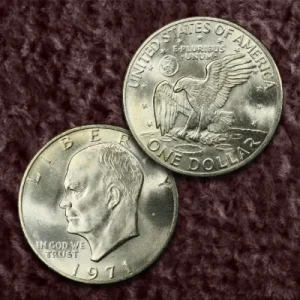
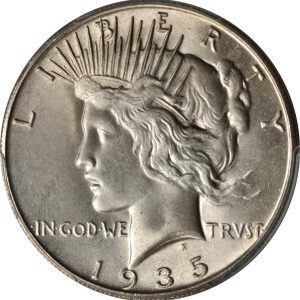
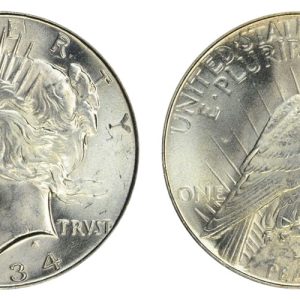
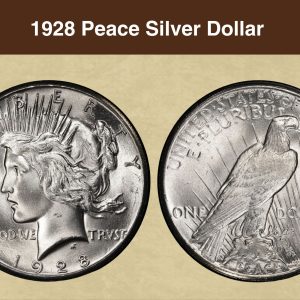
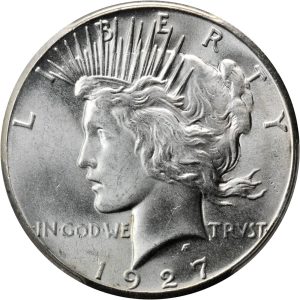
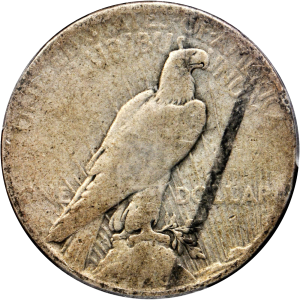
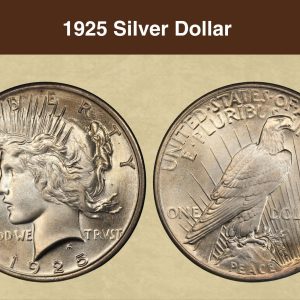
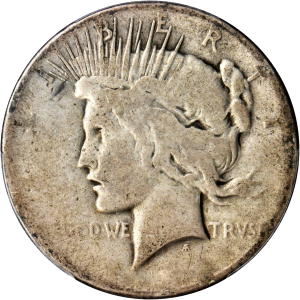
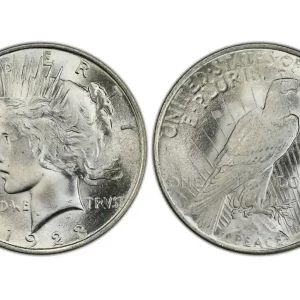
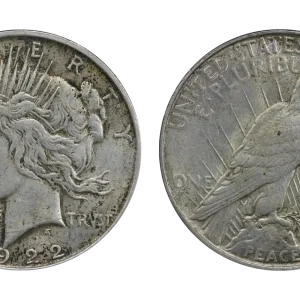
How much is a 1878 CC silver dollar worth?
The value of an 1878-CC Morgan silver dollar varies significantly based on its condition, ranging from about $150 to over $34,000. A lower-grade, circulated coin might be worth around $150, while a high-grade, uncirculated example can be worth thousands, with the highest-graded coins selling for tens of thousands of dollars. The condition, including factors like “mint state” (uncirculated) and any special designations like “Proof Like” (PL), heavily influences the final price.
Which CC Morgan dollar is most valuable?
The most valuable “CC” Morgan dollar is the 1889-CC, due to its extremely low survival rate in high grades, making it one of the rarest Morgan dollars overall. While other “CC” dates like the 1885-CC are rare, the 1889-CC is considered the king of Carson City coins, particularly in Mint State.
Are there any rare 1878 silver dollar errors?
1878-CC Rotated Reverse Morgan Dollar What’s so special about this coin? This Carson City Dollar error has a rotated reverse. If you hold a U.S. coin in your hand and turn it top over bottom (not side to side) the reverse should appear right side up. With this coin, the reverse was struck with a rotated die!